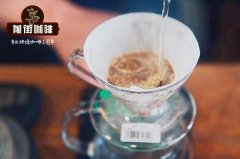Costa Rican Coffee Costa Rica Microprocessing Plant.

Professional coffee knowledge exchange more coffee bean information please follow the coffee workshop (Wechat official account cafe_style)
After the revolution of microprocessing plants 2000 years ago, because of the long-term low price of coffee beans in international trade, farmers in Colombia began to build their own processing plants. This is the country's favorite "microprocessing plant revolution." Manuel Antonio Barrantes Zuniga, the operator of Herbazu, and his family are the pioneers in this regard.
Take back the work originally led by a large processing plant and make your own equipment in the Herba Garden. The photos are authorized by Cafe Lulu to use self-built processing equipment, and the beans produced by you are processed by yourself, which is the Micro Mill, which means that farmers take back the work originally dominated by large processing plants and do it by themselves. In addition to avoiding being subject to bulk purchase prices, producers can also look back on improving planting and production based on the experience gained in subsequent processing, while consumers can get coffee with a clearer production resume.
"want to make yourself better" stepping into the coffee bean processing program is no small matter. It costs about $12 billion to $150000 to invest in a microprocessing plant, which can be said to be a feat of investing all your wealth in a country with a per capita income of $6500.
For three or four generations of coffee-growing families like the operators of Herbard, the microprocessing plant revolution was the beginning of planting as an art. When you take care of your grown-up coffee beans, you no longer need to mix with other people's beans, and how to make your own performance more outstanding, various efforts to "want to make yourself better" will emerge one after another.
This gives rise to an important feature of Herba é: the possibility of always having the courage to try different varieties and treatments. On their land, you can see different varieties such as Caturra, Villa Sarchi, Geisha and SL28. Honey treatment, which has sprung up in recent years, also originated in Costa Rica, where it is called "Miel", which means honey in Spanish.
Costa Rica, the beautiful country of environmental pioneers, has advanced environmental regulations, and ranked 42nd out of 178 countries in the Environmental performance Index (EPI) of Yale University in 2016.
The waste water from the fermentation of coffee beans is very oxygen-consuming when it is decomposed. If it is discharged at will, it will often cause ecological havoc. In response, Costa Rica amended the relevant law in 1995 to force the relevant industries in the country to install wastewater treatment facilities.
Most coffee farmers in Colombia use the endocarp of coffee beans and pruned branches as fuel for dryers to avoid cutting down trees as much as possible. Some farmers use biogas produced during fermentation to provide energy for mechanical operation.
Important Notice :
前街咖啡 FrontStreet Coffee has moved to new addredd:
FrontStreet Coffee Address: 315,Donghua East Road,GuangZhou
Tel:020 38364473
- Prev

Kenyan coffee varieties SL28, SL34.
Professional coffee knowledge exchange more coffee bean information Please follow Coffee Workshop (Wechat official account cafe_style) "Kenya" in East Africa is one of the major coffee producing countries. More than 6 million people in the country are engaged in the coffee industry, mostly in the form of a combination of small farmers and cooperatives. Coffee trees in Kenya are mostly planted at 1400-2000 meters above sea level, and the growth area includes Ruiri.
- Next

Does water temperature matter when coffee is extracted?
In the brewing process, water and coffee will undergo some complex chemical reactions, and the water temperature will directly affect the extraction rate of different components in the coffee during brewing. Water extracts quinic acid, amino acids and tannins, caffeine, oils and other substances from coffee. During the cooking process, different stages produce different reactions. The temperature of water affects the extraction of coffee liquid.
Related
- Beginners will see the "Coffee pull flower" guide!
- What is the difference between ice blog purified milk and ordinary milk coffee?
- Why is the Philippines the largest producer of crops in Liberia?
- For coffee extraction, should the fine powder be retained?
- How does extracted espresso fill pressed powder? How much strength does it take to press the powder?
- How to make jasmine cold extract coffee? Is the jasmine + latte good?
- Will this little toy really make the coffee taste better? How does Lily Drip affect coffee extraction?
- Will the action of slapping the filter cup also affect coffee extraction?
- What's the difference between powder-to-water ratio and powder-to-liquid ratio?
- What is the Ethiopian local species? What does it have to do with Heirloom native species?

